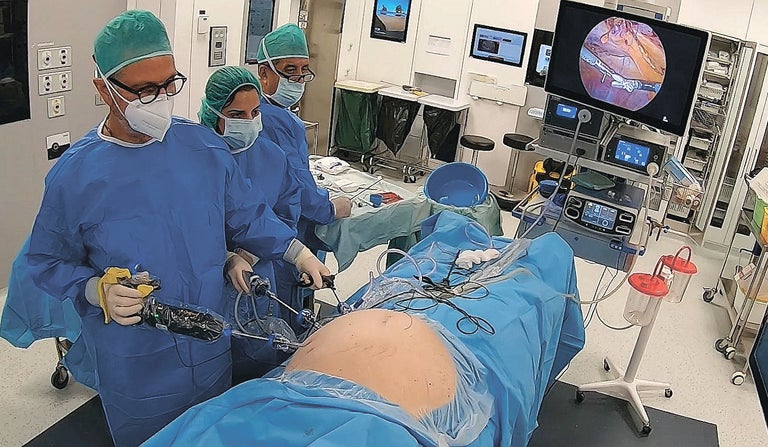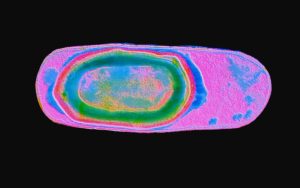In recent decades, contemporary medicine has seen profound changes in terms of medication use, novel technology therapies, and ground-breaking diagnostic procedures. Nonetheless, these revolutions have largely bypassed the surgical sector, which has been built for hundreds of years on a single, outmoded approach: open surgeries, during which the surgeon performs intrusive procedures that entail quite substantial cuts to the patient’s body. The surgical field desires technical improvements, even if they are more conservative in character.
Laparoscopic surgery has changed this reality. This surgical strategy is based on the assumption that open procedures result in longer recovery periods, more discomfort, and a higher risk of infections and problems. Laparoscopic surgery is a technical approach that involves tiny incisions in the patient’s abdomen.
Israeli company Human Xtensions operates within this blossoming field. The company is developing advanced technological solutions for the laparoscopic medicine field. “In recent years, the laparoscopic approach has hit a glass ceiling,” Dr. Tamar (Tami) Frenkel, the company’s CEO. “On the one hand, the tools that already exist within the laparoscopic market enable surgeons to perform complex procedures, while reducing the trauma inflicted upon the patient. These tools generally include an end-tool that’s connected to a long pole with a handle that looks like that of a pair of scissors. On the other hand, these tools limit the surgeon’s ability, hand movements, and access to various areas of the anatomy, thereby preventing their ‘virtuoso’ capabilities. This, unlike in open surgeries, where the surgeon’s approach is less limited, but causes greater trauma to the patient.”
Conversely, Frenkel explains, today’s more advanced solutions come with a hefty price tag: approximately 2 million dollars per robotic system. “Over 20 years ago, a project that was mostly developed by NASA first landed. It was a sort of giant workstation that provided doctors with greater freedom to act. However, this system was not – and is not – financially accessible to most hospitals around the world, especially those in countries plagued by financially troubled healthcare systems.”
Human Xtensions was born following a request made by Dr. Amir Szold, one of the country’s leading laparoscopic surgery experts. “Dr. Szold requested that we come up with a simpler, more compact, and accessible solution; one that integrates the advantages of robotic technology with those of laparoscopic surgery,” Frenkel recounts, before adding with pride, “and that’s exactly what we did.”
A joystick for surgeons
The product developed by the company is called HandXTM. Unlike the large and threatening robotic systems from the laparoscopic medicine field, the small HandXTM device contains innovative technology that’s revolutionizing the surgical world. “We developed a smart, digital activation system for laparoscopic control,” Frenkel says. “Our device is able to perform complex manipulations within the patient’s body. With a price tag, size, and weight that are approximately 5% of the existing robotic devices, HandXTM is accessible to any hospital. Use of this device allows the benefits of laparoscopic surgery, improving recovery patient time and shortening hospitalizations.”
The advanced device operates like a smart joystick that’s capable of translating the doctor’s hand movements, in real-time. A single-use tool connects to the device itself (also developed by the company), enabling various surgical procedures within the patient’s stomach, such as incising, separating tissues, suturing, or cauterizing. “Our technology enables us to replicate the freedom of mobility experienced by surgeons in traditional, open surgeries,” Frenkel explains. “We enable the surgeon to maintain their capabilities, even in laparoscopic environments, thanks to our ‘bionic hand.’”
Human Xtensions refers to their medical device as a technological product that’s intended to be updated and developed, on an ongoing basis. “There’s a smart brain inside of the device. We plan to release software upgrades down the line, to empower the device with even more advanced capabilities. We see the future of HandX™ following a similar trajectory to that iPhone, which started off as a cellphone and became later became a computer in its own right. Our solutions will later be adapted to additional surgical procedures.”
Frenkel, a PhD in Biomedical Engineering who specialized in Mechanical Engineering, views the company’s mission to be altruistic in nature. “I truly believe in real industry in Israel, especially in the medical industry,” she says. “We believe in the development of solutions to meet needs as they arise in the field – not the converse. At the end of the day, the doctor is the professional who orchestrates the treatment, and our system seeks to provide the doctor maximum control over those processes. We considered the surgeons’ needs, requests, and preferences, and developed a product that fits them like a glove.”
The right technology, at the right time
Human Xtensions has received the official approval of both the American FDA and the European CE Mark, enabling the company to sell its products within the intended markets. The company went public at the end of 2020, on the Tel Aviv Stock Exchange. The company sees vast potential within the technology it developed, especially in light of recent acceleration within the laparoscopic medicine field, and the penetration of laparoscopic processes into new surgeries.






